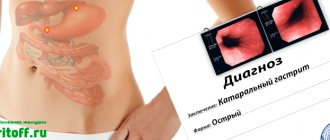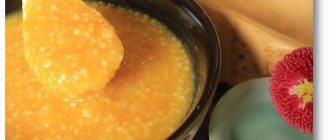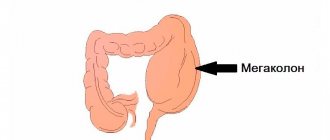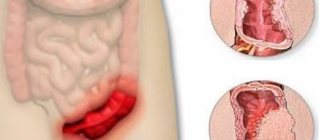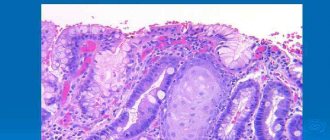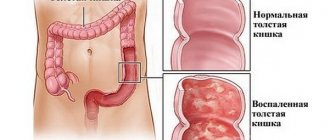One of the most common troubles for an infectious disease parasitologist patient is worms in the intestines. Parasitic infection annually destroys more than 16 million lives across the planet. Therefore, it is so important to know the enemy by sight and recognize the first alarm bells of pathology. The ideal is to follow preventive measures to prevent intestinal parasites from developing in humans. We will look into what types of intestinal parasites there are in humans and what the symptoms of helminthic infestations are in the material below.
How does infection occur?
It is important to understand that infection with worms always occurs only through the fecal-oral route. That is, the infection mechanism looks something like this:
- A person or animal infected with worms defecates.
- Feces contaminated with worm eggs are found in the external environment. This is where pets, garden herbs, vegetables, fruits and people can come into contact with it.
- On the hands, parasite eggs are transferred to the mouth with food if hand washing is poor.
- Or helminth eggs can enter the human stomach with food (poorly washed vegetables, fruits, herbs, undercooked meat or fish).
In addition, worms can enter the human body in the following ways:
- Through insects (fleas, flies, cockroaches), which carry parasite eggs on their paws;
- Through swimming in polluted waters;
- When walking barefoot on contaminated soil.
Important: in any case, the worms first appear in the stomach and only then reach the intestines. It is there that they grow and develop into sexually mature individuals capable of laying eggs.
Diagnosis of helminthiasis
In order to prescribe the correct treatment, the doctor needs to determine the type of parasite and its location in the human body. This will require diagnostic measures, which include the following:
- Stool analysis. This diagnostic test can detect both worms and protozoa and should be taken before you start taking dewormers or antibiotics. Feces must be collected several times at different times of the day so that specialists can detect parasite eggs in it.
- The Scotch tape test detects pinworm eggs. The specialist applies the adhesive tape to the patient's anus and then examines it under a microscope.
- In advanced cases, when serious problems arise with internal organs, the doctor may recommend an X-ray with barium.
Types of intestinal parasites in the body
There are more than a hundred types of helminthic infections. However, the most common parasites in the human intestine are no more than 10 species. Below is a list of commonly encountered worms in Central and Central Europe:
- Pinworms. The most common “guest” in the body of children aged 3 to 14 years. The maximum length of the parasite is about 1 cm. The helminth is localized mainly in the small and large intestines. It lays its eggs in the folds of the skin of the anus. In this case, the egg matures within 5 hours after the female lays it. As a result of scratching the anus during itching, re-infection with a parasitic infection occurs through the hands and subsequently through the mouth.
- Ascaris. The maximum size of the parasite can reach 40 cm. The shape of the worm is spindle-shaped. The helminth is localized mainly in the intestines. But at the same time, it is able to migrate throughout the body with the bloodstream and stop in the lungs, liver, heart and even in the brain. The worm feeds on human blood, which sooner or later leads to persistent anemia. It is noteworthy that roundworm eggs can survive in the soil for up to 3-5 years.
- Giardia. These are protozoa that choose the human intestines, liver or gall bladder as their habitat. The carriers of such parasites in the intestines are cats, dogs and rodents. Insects can also carry protozoan eggs. Giardiasis, if treated poorly and untimely, can lead to serious intoxication of the human body and damage to the central nervous system.
- Wide tape. The maximum size of the parasite can reach 10 meters. And its life cycle in the human body is up to 25 years. The main cause of infection is the consumption of fish and its derivatives that have not undergone sufficient heat treatment.
- Toxocara. It is dangerous because it parasitizes in the human body without being released. It can live in the stomach, rectum, bronchi and even in the eyes. The maximum length of Toxocara reaches 30 cm. Toxocariasis can cause serious harm to the human body.
- Bovine and pork tapeworm. Such helminths enter the human body through cow or pig meat that has not undergone sufficient heat treatment. The body length of an individual can reach 2-7 meters. The life cycle of the parasite is up to 20 years. The main danger of tapeworms is that they feed on the resources of the human body. At the same time, they can remain undetected for a long time.
- Echinococci and alveococci. This type of helminth also enters the body through dirty hands and mouth. That is, parasites first appear in the human stomach, and then in the intestines.
- Whipworm. This parasite causes a disease called trichocephalosis. Such worms live in the human stomach (photos below) and in the large intestine. If not detected and treated in a timely manner, they lead to appendicitis and anemia.
- Hookworm. This worm has a round shape and a light pink pigment. Its length can reach 14 mm. The helminth feeds on human blood, sucking about 0.35 ml of blood per day. That is why the main sign of such helminthic infestation is anemia and anemia.
Symptoms of parasites in the intestines
It is important to understand that the symptoms of parasites in the intestines can be either common to any helminthic infestation or manifest themselves in the form of signs specific to each type of parasite. So, the general symptoms for a parasitic infection look like this:
- Soreness in muscles and joints. This is caused by the accumulation of toxins that the helminth releases into the human blood during its life activity. That is, intoxication occurs.
- Stool disorders. Moreover, there can be both diarrhea and constipation.
- Inflammatory processes in the intestines. They occur due to a violation of the integrity of the intestinal walls by helminths. As a result, all nutrients are absorbed with less effect. The presence of intestinal parasites is indicated by a symptom - a high level of fat during a coprogram (stool analysis).
- Low hemoglobin level. However, its level is not corrected by iron supplements.
- Allergic rashes. They are a response of the immune system to the introduction of helminthic invasion.
- Weight loss for no apparent reason. Occurs due to a systemic lack of nutrients and substances beneficial to the human body.
- General fatigue and nervousness. They are the results of intoxication.
- Formation of benign and malignant formations. Especially in the gastrointestinal tract.
There are also a number of characteristic signs of helminthic infections inherent in certain types of parasites in the human body.
Pinworms (enterobiasis):
Herb Troychatka Evolar: reviews of parasitologists about the medicine
- Unbearable night itching in the anus;
- Mucus in stool;
- Pain in the lower abdomen.
Ascariasis:
- Night dry cough and shortness of breath;
- Increased body temperature;
- Increased sweating;
- Pain in the lungs and heart;
- Nausea and vomiting;
- Bloating;
- Yellowing of the skin and sclera of the eyes.
Giardiasis:
- Decreased appetite;
- Eczema and urticaria;
- Sharp intestinal pain;
- Headache;
- Heart rhythm disturbance.
Wide tape:
- Constant nausea and dizziness;
- Enlarged spleen and/or liver;
- Increased heart rate;
- Numbness of the legs and their paralysis;
- Memory impairment and a sharp decrease in concentration;
- Malfunctions of the vestibular apparatus;
- Pale skin.
Toxocara:
- Sleep disorders;
- Periodic attacks of suffocation;
- Enlarged lymph nodes;
- Increased body temperature;
- Tearfulness and purulent inflammation of the eyes;
- Decreased vision;
- Vomiting and nausea;
- Bronchitis type cough.
Bovine and pork tapeworms (teniarinhoz and cysticercosis):
- Discomfort in the anus;
- Detection of proglotids under the skin and in feces;
- Fainting conditions;
- Anemia;
- Decreased sensitivity and subsequent paralysis;
- Decreased vision and increased reaction to light;
- Irritability;
- The appearance of hallucinations;
- Formation of tumors.
Alveococci and echinococci:
- Red spots all over the body;
- Weight loss;
- Dizziness;
- Pain in the chest and right hypochondrium;
- Diarrhea and vomiting.
Hookworm:
- Weakness and headache;
- Increased salivation;
- Heart pain and shortness of breath;
- Inflammatory processes on the organs of vision;
- Disruptions of the menstrual cycle;
- Infertility;
- Soreness in the stomach;
- Belching with an unpleasant aftertaste.
Important: if symptoms of a parasite appear in a person’s stomach or intestines, you should immediately consult an infectious disease doctor or parasitologist. Delay can cost your life.
Drug therapy
Drugs for the treatment of tapeworms in humans
To completely neutralize worms in the intestines and stomach, it is necessary to select competent drug therapy. In this case, antiparasitic drugs are used against helminths. Some of the most potent drugs of the latest generation include the following tablets and suspensions:
- Pyrantel and Piperazine;
- Levamisole and Praziquantel;
- Naftamon and Zentel;
- Mebendazole and Difezil.
In this case, it is better to give drugs in suspensions to children from one year to 6 years old. It is important to understand that all anthelmintic drugs are quite toxic. Therefore, not all of them are acceptable for use during pregnancy, kidney and liver pathologies, or during lactation.
Important: only the attending physician should evaluate all symptoms and prescribe treatment according to the type of drug (select its dosage).
Medicines to get rid of parasites
How to remove worms from the intestines? This question is of interest to those whose examination revealed the presence of any parasites. To destroy them, medications are used that act on the nervous system or the life processes of the worms. As a result of their influence, the helminths experience paralysis or the feeding process is disrupted, as a result of which they die. Antihelminthic drugs according to their spectrum of action are divided into:
- Narrow - used to get rid of a certain type of worms. So, to destroy tapeworms in the intestines, Niclosamide is prescribed, and for the extraintestinal form, Albendazole is prescribed.
- Wide - used for mixed helminthiases and make it possible to get rid of various types of parasites at once. For example, the drug "Levamisole" helps to destroy Toxocara worms. The duration of therapy ranges from 7 to 20 days, depending on the location of the lesion. It also affects pinworms, roundworms, pork tapeworms, lamblia, nematodes, cestodes, trematodes and many other varieties.
Depending on the current situation, the doctor may use complex therapy, prescribing several drugs at the same time, or one broad-spectrum drug. Most medications can destroy only adult individuals, without affecting the larvae and eggs. Therefore, after 2-3 weeks the course is repeated to completely cleanse the body. The most important thing: you should not self-medicate. All drugs are toxic and must be prescribed by a doctor.
Folk remedies
If taking medications against worms is impossible for any reason, folk remedies can be used to treat helminthic infestations. In particular, the following anti-parasite agents are used:
- Ledum and celandine - from Giardia;
- Pumpkin seeds - from pinworms;
- Pomegranate peels are from roundworms.
In addition, you can include the following antiparasitic foods in your diet:
- Garlic;
- Hot black and red pepper;
- Cinnamon and ginger;
- Cloves and cardamom.
You can drink the following herbal decoctions against worms:
- Tansy;
- Sagebrush;
- Elecampane.
Enemas with garlic or soda are carried out as cleansing measures for the body. You can cleanse your body with cognac and castor oil once a year. To do this, drink 50-100 ml of cognac at night, and after 15 minutes - 50 ml of castor oil heated to 40 degrees. The next morning, diarrhea should occur, along with which all existing parasites will come out.
It is also worth considering that, along with folk remedies or drug treatment, it is very important to create an unfavorable environment for helminths. And for this you need to reconsider your diet. All sweets and meat, fatty and smoked foods should be excluded from the menu. The diet should contain simple cereals, vegetables, berries and fruits, as well as fermented milk products, nuts, legumes, strawberries, currants, and cream.
Treatment
Therapy for any helminthiasis should be under the supervision of a doctor. Independent use of anthelmintic drugs (including for prophylaxis) is unacceptable, since most drugs are quite toxic.
An integrated approach is required, including dietary nutrition, medications and folk remedies.
Nutrition
There are no strict rules regulating nutrition for helminthiasis. It is enough to follow the rules of a healthy diet:
- consume enough low-fat dairy products;
- include a variety of cereals, egg dishes, lean fish and meat in your diet;
- give up alcoholic beverages;
- reduce or eliminate processed foods, carbonated water, foods high in preservatives and flavor enhancers;
- All products must be thoroughly washed (vegetables, fruits, berries), and, if possible, heat-treated (rare steak is not allowed) to prevent re-infection.
Be sure to read:
Intestinal amebiasis: symptoms of infection and treatment methods (drugs)
When prescribing a specific drug, the doctor will individually explain which foods should be limited or completely eliminated.
Drugs
In the treatment of helminth infections, universal drugs are used that destroy several types of helminths at once. These include:
- Praziquantel;
- Mebendazole;
- Albendazole;
- Piperazine;
- Pyrantel;
- Levamisole.
The duration of the course of treatment is selected individually. Hepatoprotectors and enterosorbents are used in combination with antiparasitic drugs.
Deworming
The use of some anthelmintic drugs involves combining it with an enema. The enema is an ordinary cleansing enema - there are no special features. Whether it is needed or not, the doctor decides.
Read more:
- Cleansing enema using a syringe
- Cleansing enema using Esmarch's mug
Folk recipes
Efficiency is questionable. Among the popular ones are:
- pumpkin seeds;
- alcohol tincture of unripe (green) walnuts;
- alcohol tincture of chanterelles;
- a freshly prepared decoction made from pine cones.
A combination of folk recipes and traditional medicines is completely acceptable.
Prevention measures
In order to avoid possible infection with worms, you should adhere to basic preventive measures. These are:
- Thorough hand washing before eating, after using the toilet, after contact with animals or working in the garden;
- Regular and timely deworming of pets;
- Limiting contact with street animals and birds;
- Thorough washing of vegetables, fruits and herbs before consumption;
- Boiling water or using only purified water for food;
- Regular house cleaning and insect control.
Remember, it is always easier to prevent a parasitic disease in the stomach in an adult and a child than to later reap the benefits of a helminthic infestation and fight it for a long time. Keep your hands clean and stay healthy!

